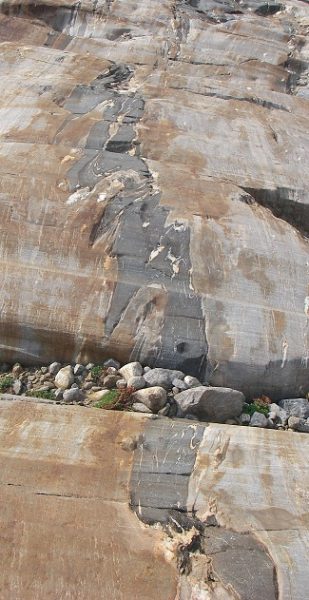 Group members
Group members
Igor Beresnev → Geophysics
Jane Dawson → Petrology, tectonics
Chris Harding → GIS, human-computer interaction, computational geology
Jacqueline Reber → Structural geology
Paul Spry → Economic geology, mineralog, petrology
Research topics
Our Solid-Earth group includes faculty actively engaged in understanding the formation and evolution of crustal rocks, ore deposits, and petroleum reservoirs, the physics of earthquakes, and the imaging of the earth’s crust through seismic waves and other geophysical fields. We study regional structural geology and tectonics with emphasis on metamorphic petrology and radiometric age dating to reveal the tectonic evolution of the southwestern United States. We conduct research on economic geology, mineralogy, and petrology of mineral deposits, in particular the origin of and exploration for base- and precious-metal ores. We look into the microscopic structure of oil reservoirs and develop innovative methods of oil and gas extraction from them. Group members also are involved in improving our ability to predict ground shaking caused by earthquakes to better estimate hazards from future seismic events.
Group members’ current field work and collaborations take them to geographic regions as diverse as southern California, Mexico, Greece, Fiji, Australia, and Russia, just to name a few.
Here are a few research questions from our current projects:
- What is the origin of gold-telluride deposits, what tellurium (Te) species are found in ore-forming liquids and vapors, and what can we learn from the stable Te isotopes of gold-bearing tellurides? How can we us the trace-/major-element composition of metamorphic minerals to search for metamorphosed ore deposits? (Spry)
- How did Late-Cretaceous through Tertiary oceanic rocks beneath southern California reach the land surface during the process of exhumation? How can we unravel the geologic history of the region using modern methods of Ar/Ar and (U-Th)/He thermochronology, detrital-zircon U-Pb dating, and computer mapping and visualization? (Hardingand Dawson)
- Can we apply acoustic waves and seismic vibrations to force the movement of oil and gas in petroleum reservoirs toward producing wells, leading to technologies of “engineered permeability” and enhanced petroleum recovery? What is the capillary physics that couples seismic waves and pore fluids? (Beresnev)
- What physical factors on rupturing faults control the intensity of seismic shaking radiated to the surface? How strong is the maximum possible ground motion? Why do earthquake ruptures stop, most of the time ending in relatively modest events but sometimes producing giant ones? (Beresnev)
Facilities
The Solid-Earth group possesses numerous instruments used in faculty and student research:
- Mass spectrometer for light stable-isotope analyses (lab page)
- Petrographic and stereomicroscopes with image-analysis capabilities
- An electron microprobe, X-ray diffraction unit, and various SEMs on campus
- Ion microprobes, laser ablation ICP-MS, TIMS, and other state-of-the-art instrumentation through collaborators at various institutions
- Field geophysical equipment for high-resolution subsurface investigations: a 24-channel seismic-acquisition unit, a multi-electrode resistivity imaging system, and a ground-penetrating radar
- Computer equipment and software for high-end mapping and visualization
Students interested in pursuing research in Solid-Earth Processes are encouraged to contact one of the group members or geology@iastate.edu.
